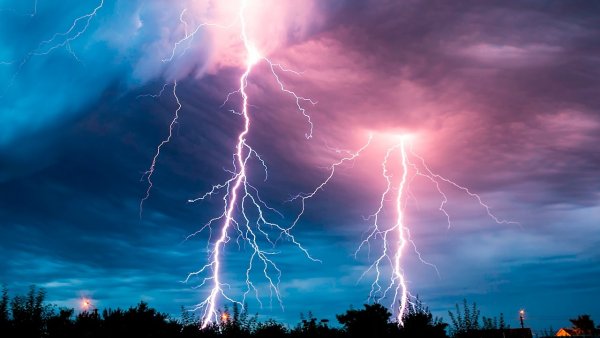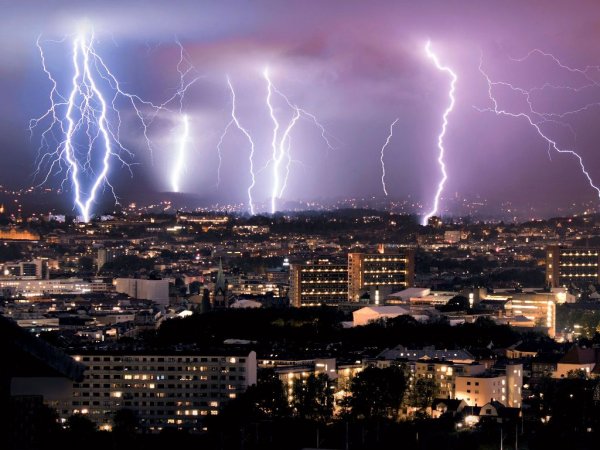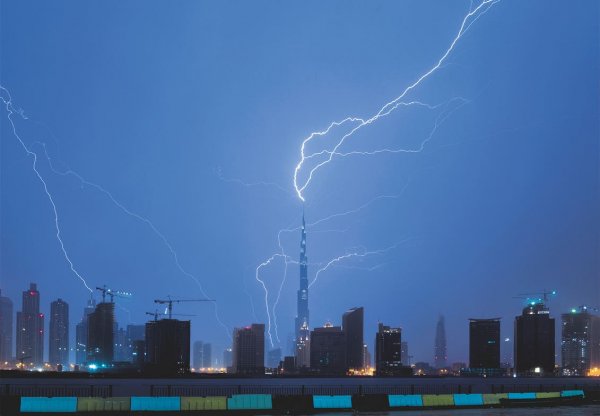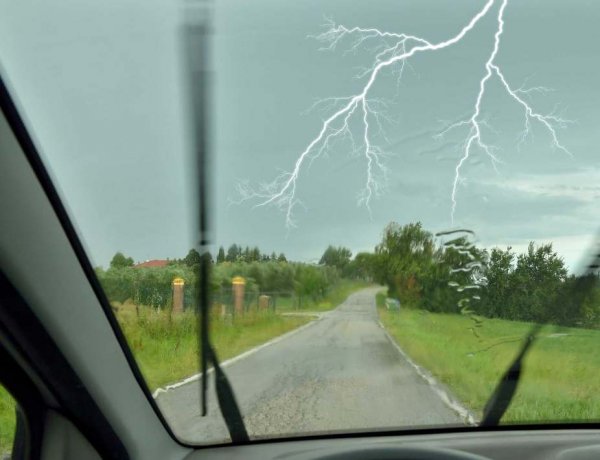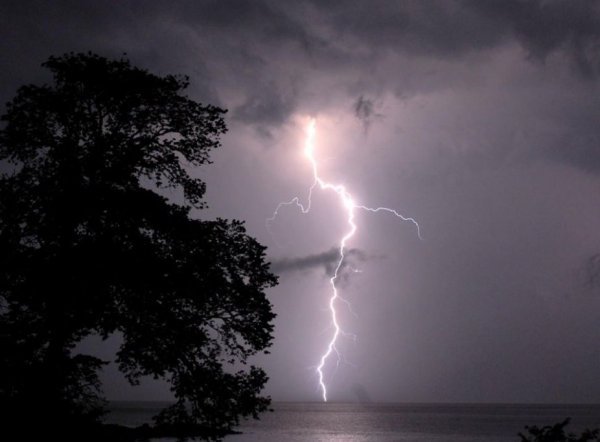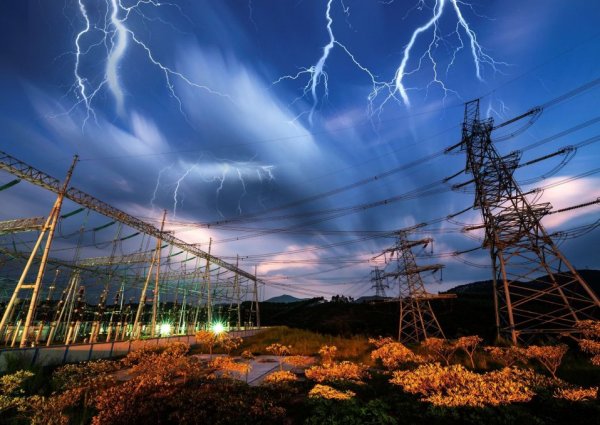35 frequently asked questions about thunder and lightning
Lightning is one of the most beautiful mysteries on Earth, but it is very dangerous because it possesses gigantic destructive power. Even in ancient times, man watched lightning split tall trees, set fire to forests and homes, killed cattle and sheep on mountain slopes and valleys, and witnessed people die from lightning more than once. The impression of blinding lightning was heightened by the terrifying rumble of thunder.
Before this gigantic fearsome element one felt small, weak and utterly helpless. He considered lightning and thunder to be manifestations of the displeasure of the gods, a punishment for evil deeds.
Modern science has proven that thunderstorms are complex atmospheric phenomena accompanied by electrical discharges-lightning that cause thunder. Today we know a fair amount about thunderstorms, lightning and thunder, and lightning protection. But there is also undisclosed.
How lightning is formed: What is lightning and how does it occur?
The purpose of this article is to correctly explain the causes of natural phenomena that occur around us, information about thunderstorms and lightning accumulated by science to date, which is constantly updated and improved thanks to tireless research conducted worldwide.
So, 35 most popular questions about thunder and lightning.
1. Where are the centers of thunderstorms? — They are mainly where mountains and river valleys often alternate, and in the plains — in places where water evaporation is more significant. The appearance of thunderstorms is influenced by the shape of the relief, which contributes to the formation and maintenance of temperature differences in the adjacent air layers.
2. How common are thunderstorms in the Northern and Southern Hemispheres? — In most regions of the middle latitudes of the Northern Hemisphere, the greatest number of thunderstorms occur in the summer months of June and July, and less in the winter months of December and January.
In the Southern Hemisphere, thunderstorms most often occur in December and January, less often in June and July. There are quite a few exceptions to the above data. For example, in Great Britain and around Iceland, winter thunderstorms are quite common. Over the ocean, the greatest number of thunderstorms always occur in winter.
In tropical and subtropical areas of the globe, thunderstorms are particularly strong and most often occur during the rainy season. In India — in spring (April — May) and autumn (September). The highest number of thunderstorm days on Earth is found in tropical and equatorial countries. In the direction of northern latitudes, their number gradually decreases.
3. Which areas are the world's hotspots for thunderstorms? — There are six of them: Java — 220 days with thunderstorms per year, Equatorial Africa — 150, Southern Mexico — 142, Panama — 132, Central Brazil — 106, Madagascar — 95.
Lightning Stats:
Every second, over 100 lightning flashes over the Earth, so 360,000 per hour, 8.64 million per day, and 3 billion per year.
4. In which direction does lightning move the most? — From the clouds to the Earth, and they can hit mountains, plains, or sea.
5. Why do we see lightning? — The channel of lightning, through which a stream of gigantic force passes, is very hot and glows brightly. This enables us to see lightning.
6. Can the observer distinguish the leader from the main stage? "No, because they follow directly one after the other, extremely quickly along the same path."
A leader — the first preparatory stage for the appearance of lightning. Experts call it staggered release from the head. From the thundercloud to the Earth, the leader moves in rapid succession of light quanta, the length of which is about 50 m. The intervals between individual steps are approximately one fifty-millionth of a second.
7. Does lightning break after the first connection of two opposite charges? "The power is out, but lightning usually doesn't stop there." Often a new leader follows the path taken by the first release, followed by the bulk of the discard again. This completes the second discharge. Up to 50 such ejections consisting of two stages can occur in succession.
8. How many discharges are there most often? — 2 — 3.
9. What caused lightning to flicker? — Individual discharges disrupt the course of lightning. The observer perceives this as a flicker.
10. What is the difference between the individual discharges? "Very briefly—less than a hundredth of a second."If the number of lightning flashes is high, then the glow lasts a whole second, sometimes several seconds. The average duration of lightning is about a quarter of a second. Only a small percentage of lightning bolts last more than one second.
The American scientist McIchron cites information about the short duration of discharges rising from a tall building to a cloud. Half of the observed lightning lasted 0.3 seconds.
11. Will lightning strike twice in the same place?- Yes. The television tower in Ostankino was struck by lightning on average up to 30 times a year.
12. Does lightning always strike the top of an object? - No. For example, lightning struck the Empire State Building 15 m below its top.
13. Does lightning always choose the highest object? "No, not always." If there were two masts side by side, one of iron and one of wood, lightning would sooner strike the iron, even if it were lower. This is because iron conducts electricity better than wood (even when wet). The iron mast is also better connected to the earth, and the electric charge is more easily attracted to it during the formation of the conductor.
14. Will the lightning strike the highest point of the sand mound or clay area downstream? — Lightning always chooses the path of least resistance, and therefore strikes not at the highest point of the ground, but at the place where the clay is nearest, because its electrical conductivity is higher than that of sand. In the hilly area where the river flowed, the lightning struck the river and not the nearby hills.
15. Does chimney smoke protect against lightning? — No, because the smoke coming out of the chimney might facilitate the path of the lightning, and thus cause it to strike the chimney.
16. Can there be thunder without lightning? - No.As you know, thunder is the sound generated by lightning due to the expansion of gases, the cause of which is itself.
17. Does lightning flash without thunder? - No. Although thunder is sometimes not heard at a great distance, it always accompanies lightning.
18. How to determine the distance that separates us from lightning? — At first we see lightning and only after a while we hear thunder. If, for example, 5 seconds pass between lightning and thunder, then during that time the sound has traveled a distance of 5 x 300 = 1650 m. This means that the lightning struck a little more than 1.5 km from the observer.
In good weather, you can hear thunder 50 — 60 seconds after the lightning, which corresponds to a distance of 15 — 20 km. This is much less than the distance at which the sounds of artificial explosions are heard, since in this case the energy is concentrated in a relatively small volume, while in a lightning discharge it is distributed along its entire path.
19. Has lightning ever hit a car? — The insulation resistance of dry tires is so great that a direct lightning path to ground through the vehicle is unlikely. But during a thunderstorm, in most cases it rains, the tires of the car get wet. This increases the probability of impact even if the vehicle is not the highest object in the area.
20. Does a moving car attract more lightning than a stationary one? — There is no unequivocal answer to this question. In any case, however, one must take into account the fact that a close lightning strike can frighten and blind, therefore the speed of movement must correspond to the situation.
21. What should be done during a severe thunderstorm? — During a severe thunderstorm, you should try to find a suitable parking place or move from the highway to a forest or country road and wait out the thunderstorm there.
22. Can lightning strike an airplane in flight? - Yes. Fortunately, almost all aircraft struck by lightning continue to fly. For every 5,000 to 10,000 flight hours, there is approximately one lightning strike on an aircraft.
23. What is the place of lightning among the causes of aviation accidents? — If we make a list of the causes of plane crashes caused by such meteorological factors as frost, snow, icing, rain, fog, storms and tornadoes, then lightning will occupy one of the last places on it.
24. Which devices in the aircraft are more susceptible to lightning? — About a third of lightning strikes damage electrical appliances. There were cases when, after a lightning strike, various on-board instruments did not work - indicators of the amount of fuel, oil pressure and others, because their magnets were out of order. Refueling during a thunderstorm is not recommended as there is a risk of being struck by lightning.
25. What is the dangerous distance from the location of the lightning strike? — At the place of the lightning strike, a circle is formed, inside which the step voltage is so great that it is dangerous for people and animals. Its radius can reach 30 m. It is difficult for a bystander to distinguish whether it was a direct or indirect lightning strike, because the blinding is so instantaneous and the roar is so deafening that one does not immediately understand what happened.
26. Can an accident happen in the building? — Yes, if a person is near a metal object and near the outlet of the lightning rod.
27.Where is the lesser danger of being struck by lightning—in a city or a village? "In the city, people are in less danger because steel structures and tall buildings act as lightning rods to some extent. Therefore, lightning most often strikes people working in the fields, tourists and construction workers.
28. Is a person hiding under a tree protected from lightning? “About a third of all lightning victims took shelter under trees.
29. Are there cases when a person has experienced several lightning strikes? — American forest ranger Roy S. Sullivan, who was struck by lightning four times, is believed to be a walking ghost, and he suffered no serious injuries except for burnt hair. He himself describes the experience as follows: “It was as if I had been thrown to the ground by a giant fist and my whole body was shaken. I went blind, deaf, and felt like I was going to fall apart. It took several weeks before these sensations went away. «
30. What effect does lightning have on the human body? — The same as the action of electrical equipment operating under high voltage: a person immediately loses consciousness (which is facilitated by fear), his heart may stop. The central nervous system is also affected, which leads to paralysis of the nerves and muscles, especially the respiratory ones.
If a person survives a direct lightning strike, it is probably because most of the current went to another object. In addition to more or less serious electric shocks, lightning leaves burns on the body, sometimes deep wounds with torn flesh, as a result of the explosive activity of lightning. Burns have an amazing shape and often form colorful pictures called pictures of Lichtenberg.
31. What should be the first aid in case of lightning strike? — Same as for other electric shocks and burns: mostly artificial respiration. Done in a timely manner and long enough, it will save many lives. If the life of a person struck by lightning can be saved by providing proper first aid, the signs of paralysis usually disappear without harmful consequences slowly, over several hours or days.
32. What energy does the average line lightning hold? — Based on the voltage, current and power data of the charges, it is estimated that the average milium contains energy on the order of 250 kWh (900 MJ). The English specialist Wilson cites other data — 2800 kWh (104MJ = 10 GJ).
33. What does lightning energy turn into?— The greatest part is of light, heat, and sound all the time.
34. What is the lightning energy per unit earth surface? — For 1 sq. km of the earth's surface, the lightning energy is relatively small. Other forms of energy in the atmosphere, such as solar radiation and wind power, greatly exceed it.
35. Can lightning be useful? — Electric discharges during a thunderstorm convert part of the atmospheric oxygen into a new gaseous substance — ozone, with a pungent odor and excellent disinfecting properties. There are three oxygen atoms in its composition, it releases free oxygen, which is why the air is purified after a thunderstorm.
Under the influence of the high temperature of lightning, oxygen combines with atmospheric nitrogen, forming nitrogen compounds that are easily soluble in water. The resulting nitric acid, together with the rain, enters the soil, where it turns into nitrogen fertilizer.

